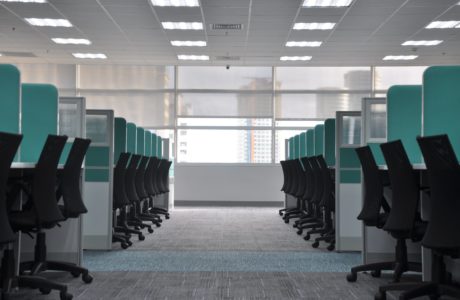What you need to know about customer and employee experience as disruption continues to evolve—and how best to sense, respond, and act.
It’s no secret: the COVID-19 pandemic has changed us as people, how we work together, and so many other things. And guess what… it’s never going back to “normal.” Though the dates for reopening our economy will depend on the progression of the virus and how we can best protect ourselves, business leaders are planning—now—for what the new normal will look like, and how to rebound to healthy business operations.
Now is the time to plan for reopening. Are you ready?
If everything has changed, that means everything has changed for your customers, too. Organizations who continually get to know their customers and employees will come out of this crisis on the other side. Even more so than before, the number one job in the next few weeks for every organization, after staying afloat, is to understand what has changed and plan for what it will be. Getting it wrong could have devastating consequences for your organization—especially as uncertainties loom in the Canadian and world economies.
The new normal part I: Focus on your customer.
Your customers’ needs have changed, how are you responding?
According to The Conference Board of Canada, “household spending on bars, restaurants, arts, entertainment, and other personal services [will drop] by nearly CDN$20 billion over the second and third quarters of 2020. The combined reduction in spending results in drastic revenue cuts for the air transportation, accommodation and food services, and arts and entertainment industries.”
Furthermore, The Retail Council of Canada (RCC) recognizes that Canadians are shifting how they purchase during this crisis: “how Canadians are buying is changing and we need new systems. […] RCC applauds Ontario’s recent province-wide announcement to allow 24/7 deliveries, which will increase how quickly retailers can move product onto shelves and get needed goods to consumers as RCC proposed.”
What changes will remain after this crisis is over, and over the next decade? Changing preferences are not likely to go back to pre-outbreak norms, according to The Economist.
The pandemic amplified the disruption already happening in the market and triggered unforeseen shifts. Rising to the occasion to establish and reestablish trust through customer-centric actions will provide short term stability and set you up for the future—beyond the immediate crisis.
Don’t rely on what you once learned—your assumptions may be your downfall.
It’s time to demonstrate to your customers that you care about their needs, and more importantly, their current needs. Adapting to provide relevant offers and services now is critical. Do you think you know your customers? Don’t rely on what you once learned—your assumptions may be your downfall. You will need to listen closely and re-establish your understanding of what they feel, what they do, and most importantly, why.
What can I do now to adapt while preparing for the future?
Develop ways to connect and work with your customers to keep your finger on the pulse and consider anything that you can do to meet customers where they are—and change your habits and your offerings to meet them where they’re at. The rapidly changing nature of customer needs makes research and co-creation an imperative so you can adapt and respond quickly to market shifts.
Here are some recommendations based on how The Moment is working with dozens of leaders across various organizations and industries:
Observe.
Although the pandemic measures put limitations on where we can be and how we can engage with customers, research is multifaceted and the toolkit is quite abundant.
Even some light online and social media scans could go a long way to find out what your customers are interested in, reading, and posting online.
Observe your customers, what they are saying, and how their behaviours have changed since pre-pandemic times.
Collect.
Secondary research is also a low investment, and much of the research materials related to the current pandemic are being made available for free, including research from the Conference Board of Canada, StatsCan, Leger, and others. Look for recent benchmark surveys and any industry analysis that will help you get the big picture. Be sure to check the dates of when these reports are published and collect more information as the situation continues to evolve.
Create a data collection system and invite your team to contribute. At The Moment, we have created a special Slack Channel #landscape to share interesting finds amongst the team.
Foresee.
Collecting and curating sources, signals of change, and emerging trends is also a way to understand the changing nature of people’s behaviour, as well as any larger market trends.
At The Moment, we have an ongoing Slack Channel #signal-scanning to capture important signals and make sense of them on a regular basis. We use the STEEPV framework to organize the collected insights in a simple repository (excel sheet) on a regular basis, providing bi-weekly updates on the findings collected by the team.
You can start this foresight exercise by looking into six broad factors as you continue to scan and collect signals: social, technological, environmental, economic, political, and values, and the interdependencies between those factors that may affect your team and/or organization.
Engage.
All of the above are great ways to keep up with change in a passive way, but nothing replaces first hand learning. Talk to your customers directly. Check in on them to see how they are doing and what they might need. Have zoom coffee chats. Send them surveys.
I know what you are thinking: ‘Customers hate surveys’ …Yes & No! Customers are now spending more time online, and are generally more responsive to organizations that are making an effort to get to know their customers’ (and potential customers’) needs.
Be creative in how you engage customers; don’t overwhelm them. Really think about what information you need and what format is best to gather that information intelligently. Have a clear POV on what you are testing, and follow-up with tangible actions that will impact your customers for the better based on what they tell you.
Co-create.
Co-creating solutions with customers is taking on a whole new format now, thanks to a sudden transition to working remotely. Once done in rooms together with whiteboards and in-person activities, co-creation, like many other business initiatives, has now been moved online too. Remote tools like digital whiteboards and online conferencing are inviting customers to participate and interact in new, yet highly effective, forums.
Engage customers in remote co-creation sessions to gather insights, test out prototypes, and understand what your customers truly need.
Since the shift to remote work, we have been busy carrying on with customer co-creation sessions, facilitating critical conversations about customer service with our clients, and yielding excellent insights and changes in behaviour in their customers. With a combination of Zoom or Microsoft Teams video sessions and multiple Mural whiteboards, we are tackling complex conversations and stakeholder collaboration in a smooth and effortless way—and you can too.
Engage customers in remote co-creation sessions to gather insights, test out prototypes, and understand what your customers truly need. Don’t let remote working conditions stand in the way of better products and services.
Test.
Taking a sprint-based approach to your work is probably the most critical component right now. As uncertainty continues to mount, and time horizons continue to shorten, testing early and often will spare you the wrong investments and prevent impactful failures.
We have established a quick and easy way to access customer feedback. We call it the “Research Circuit Panel” where we recruit a panel of 8 to 12 of your actual customers. We then engage those customers on a bi-weekly basis via video-conferencing and interactive boards to ideate new concepts, validate insights,and test low fidelity prototypes.
Testing with customers is an essential part of moving fast and going deep—gaining the right insights paired with appropriate speed. Organizations large and small can take this approach, and we recommend including other platforms to bring in further customer insights, including UserTesting, UserLytics, and other such online user testing platforms.
Pivot.
Sensing into the new normal for your customers and their dynamically changing needs will lead to critical and sometimes drastic decisions. These decisions take courage, and should not be done lightly; they will impact your products & services, your brand, and your business. And that’s the point! If you’ve done the sensing, testing, and co-creating, this part should be a no-brainer.
Develop an ability to continually sense and respond to changing conditions—that’s what innovation is all about.
Develop an ability to continually sense and respond to changing conditions—that’s what innovation is all about. These skills developed over time will give you the power to pivot with confidence, leading to more profound customer relationships, and ultimately greater business success. What does your new normal look like?
One last thought.
Even though we can’t predict the future and what will happen over the coming months, one thing we know is that things are very different right now. And that includes your customers’ habits, preferences, and how they go about doing things.
This is not a one-time occurrence; as changes continue to unfold, the “new normal” continues to play out. This pandemic will seed lasting habits and mindsets within your customers. The question you must ask yourself is this: “Are we future-ready?” The only true way to understand where your business needs to go tomorrow, is by talking with your customers today. Make this a core part of your business practice, and it will never lead you astray.
Six months ago, you probably thought you knew your customers well. Things were different back then. And the current pandemic is changing dynamically. Every. Single. Day.
Navigate disruption like a pro.
We just released a new tool called The Disruption Canvas. It’s a practical guide designed to help you identify, understand, and seize opportunities in times of disruption and create an adaptable plan to move past them. Wherever you are on your journey, this canvas will help you to sense, respond, and act.
You can get the guide by filling in some information below, or read more about The Disruption Canvas here. Lead your team to navigate disruption today, and build resilience to excel tomorrow.








